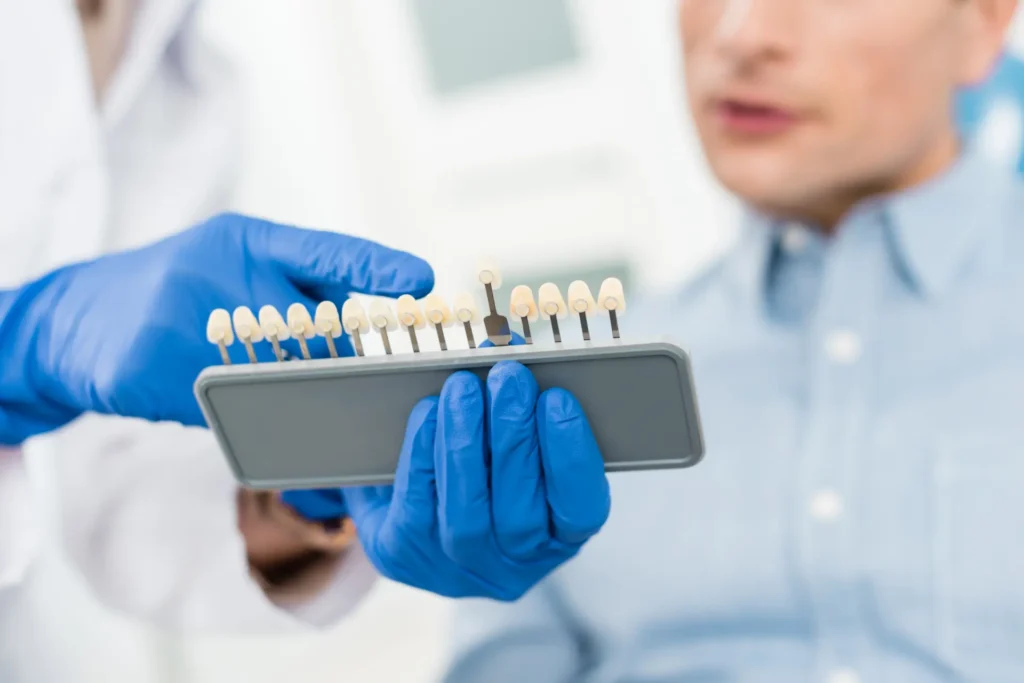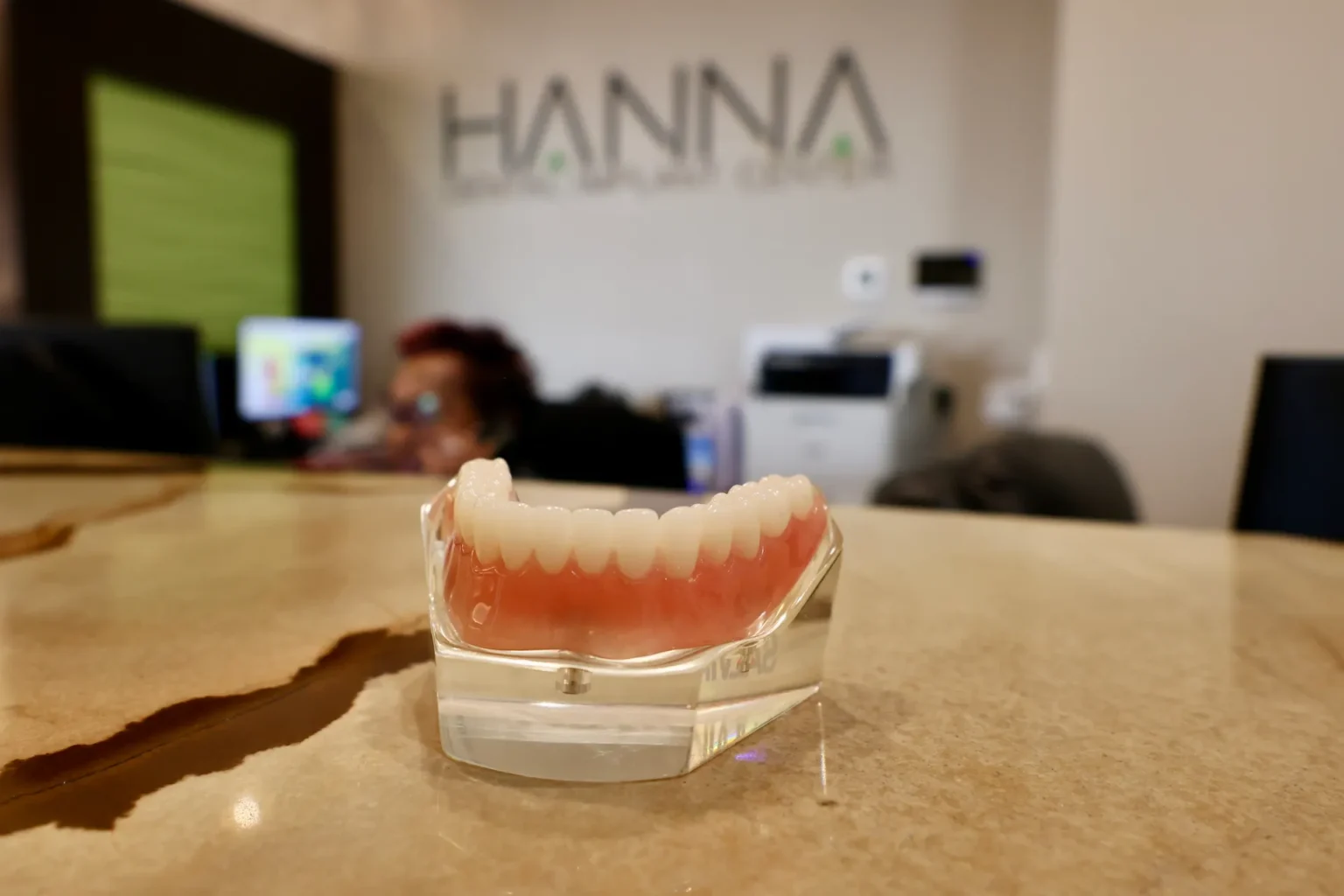Missing teeth can significantly impact oral health, including the deterioration of the jawbone that supports the teeth. Fortunately, dental implants are a great solution for restoring your oral health and aesthetics. But how much bone is needed for a dental implant?
Dental implants work by surgically placing the implant in the jawbone. This implant then bonds with the existing bone, creating a strong and secure foundation for the replacement tooth. This not only restores the patient’s ability to chew and speak properly, but it also prevents the bone loss that comes with missing teeth.
The amount of bone needed for a successful dental implant placement is determined by the size and location of the implant. An adequate quantity and quality of bone is essential for a successful implant placement. But how much is enough? Let’s find out.
The Role of Bone in Dental Implant Placement
A robust bone structure provides stability and support for dental implants. The bone structure must be strong enough to ensure the implant is firmly anchored to the jawbone and can withstand the daily pressures of biting and chewing.
The implant could fail to osseointegrate without a strong and healthy bone structure and cause serious complications. Osseointegration is when the implant fuses with the bone, creating a strong and durable bond.
This process is essential for successful dental implants and is why it is important to have enough bone structure in the jawbone for the implant to integrate properly.
Evaluating Bone Quantity and Quality
When it comes to the quantity and quality of bone needed for a dental implant, a dentist must assess the patient’s needs thoroughly. This assessment typically includes a physical examination as well as imaging techniques.
Imaging Techniques
The most commonly used imaging techniques are X-rays and cone-beam computed tomography (CBCT). X-rays provide an excellent overview of the quantity and quality of bone, while CBCT provides a more detailed analysis of the bone structure and density.
Height
The height of the bone is also important to consider when assessing the amount of bone needed for an implant. The height of the bone needs to be sufficient to ensure that the implant will remain securely in place.
Width
In addition to the height, the width of the bone also needs to be considered. The width needs to be wide enough to provide stability for the implant and to ensure that it does not move or shift in the bone.
Bone Augmentation Procedures

There are several ways a specialist may help increase your bone before your dental implant:
Bone grafting
Bone grafting is a technique used to increase the amount of bone in an area with insufficient bone density or volume. A bone graft involves taking a small amount of bone from one area of the body and placing it in another area. In the case of dental implants, bone grafts are often used to build up the jawbone, allowing for the placement of dental implants.
Sinus lift
Sinus lift procedures are also used to enhance bone volume and quality. During this procedure, a small amount of bone is placed above the maxillary sinuses, which helps to support the implant and prevent implant failure.
Both bone grafting and sinus lift procedures can help to increase the amount of available bone for dental implants.
Bone augmentation procedures are necessary in cases where there is insufficient bone density or volume for a successful implant. This could be due to bone loss from periodontal disease, trauma, or congenital disabilities. In these situations, bone grafts and sinus lifts can increase the amount of bone available for implant placement.
The amount of bone needed for a successful implant procedure will vary depending on the size and type of implant being placed and the individual patient’s anatomy.
Factors Affecting Bone Quantity and Quality
Losing natural teeth can cause bone resorption, a process by which the body absorbs the jawbone. This can lead to a decrease in the volume of bone available for a dental implant. In some cases, this reduction in bone volume can make a dental implant procedure impossible without first augmenting the jawbone.
Certain systemic conditions, such as osteoporosis, can also reduce bone density and compromise the success of a dental implant. Certain medications, such as steroids and anti-seizure medications, can also impact bone health and reduce the chances of a successful dental implant.
As a result, it is important to understand how much bone is needed for a dental implant to ensure a successful procedure. Generally speaking, a minimum of 6-8 mm of bone in the implant area is required for a successful implant. However, if the bone volume is insufficient, augmentation or bone grafting may be necessary to ensure a successful outcome.
Assessing Bone Sufficiency for Dental Implants
Regarding bone density, height, and width for dental implant placement, Hanna Dental Implant Center utilizes Computed Tomography (CT) scans and Cone Beam Computed Tomography (CBCT) to measure the amount of bone needed for implant placement precisely.
Factors such as the size of the implant, the patient’s age, and the amount of available bone are considered when determining whether or not the patient has enough bone for a dental implant. In most cases, the ideal bone density is greater than 5 mm in height and 8mm in width for successful implant placement.
CBCT technology has revolutionized the dental implant industry as it allows for the most detailed and accurate measurements of bone density.
The scans can capture the exact structures of the jawbone in three-dimensional images, giving the doctors a clear view of the patient’s anatomy. This allows for more precise measurements to be taken and more informed decisions to be made when it comes to dental implant placement. CBCT scans also allow the doctor to better understand the patient’s overall oral health so that they can provide the best treatment plan for their needs.
Solutions for Insufficient Bone

In cases where the available bone is inadequate to support the implant, a bone graft may be necessary to augment the existing bone.
Bone grafting can be done using either synthetic or natural bone material.
Synthetic bone grafts
Synthetic bone grafts are made from various materials, including ceramics, hydroxyapatite, and polylactic acid.
Natural bone grafts
Natural bone grafts are obtained from other body parts, such as the chin, hip, or iliac crest. The amount of bone required for a successful dental implant depends on the type of implant being placed and the condition of the patient’s jawbone.
When there is limited bone availability, alternative implant techniques can be used to secure the implant in place:
Mini implants
Mini implants, also known as one-piece implants, are smaller than traditional implants and require less bone volume.
Zygomatic implants
Zygomatic implants are placed directly into the cheekbone and can be used when there is not enough bone available in the jaw.
Both mini implants and zygomatic implants provide a secure foundation for dental implants and can be used to replace missing or damaged teeth.
So, how do you know which is the right solution? You’ll find the answer by consulting a qualified implant specialist.
Importance of Seeking a Qualified Dental Implant Specialist in Houston
Choosing a qualified dental professional with expertise in assessing the bone quantity and quality for dental implant placement is paramount for a successful procedure. Selecting a specialist with the experience and skills necessary to evaluate your bone structure accurately and recommend appropriate treatment options is important.
When selecting a qualified implant specialist in Houston to perform your procedure, you should look for one with the necessary skills and expertise to assess the amount of bone needed for your particular dental implant.
It is important to find a specialist with the experience and knowledge to properly evaluate your bone structure and recommend the best treatment options.
FAQs
How much bone height is needed for a dental implant?
The amount of bone needed for a dental implant will depend on the type of implant being placed, the anatomy of the jaw, and the specific location of the implant. Generally speaking, the minimum height of bone needed for an implant is 8-10mm. However, in cases of severe bone loss, Hanna Dental Center may be able to use advanced techniques to place implants with as little as 4-6mm of bone height.
Can you get dental implants if you have very little bone?
You can get dental implants even if you have very little bone. Hanna Dental can use advanced techniques to place implants with minimal bone height. However, the type of implant used and the placement of the implant may need to be altered due to the lack of bone.
What happens if you don’t have enough bone for dental implants?
If you don’t have enough bone for dental implants, Hanna Dental may need to use advanced techniques such as allograft, autograft, or sinus augmentation to build up the area before the implant can be placed.
How Much Bone is Needed for a Dental Implant? Hanna Dental Explains.
Dr. Raouf Hanna, a Double-Board Certified Specialist and Clinical Associate Professor at the University of Texas, is a world renowned expert in dental implant procedures. With a proven track record, Dr. Hanna has revolutionized the dental implant industry with his patent and cutting edge aesthetic and implant services.
If you are looking for a specialist with the experience and expertise to provide you with the best dental implant services, look no further than Dr. Raouf Hanna and his team at Hanna Dental Implant Center. Contact us today to learn more!



